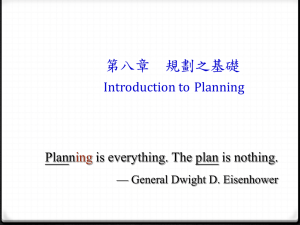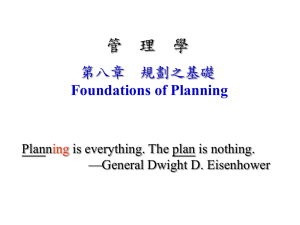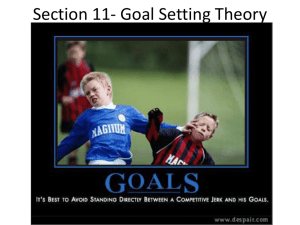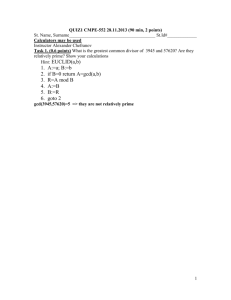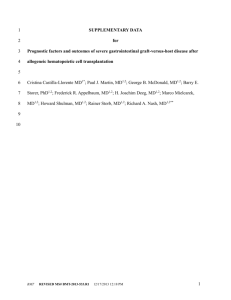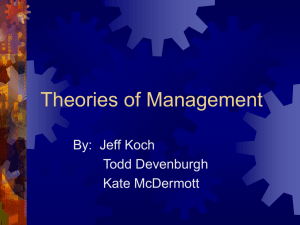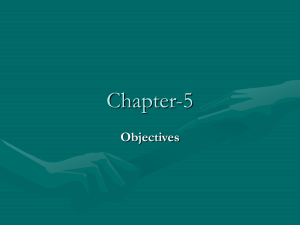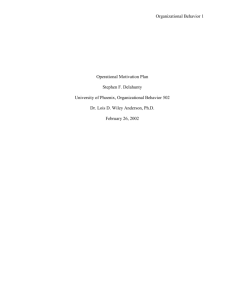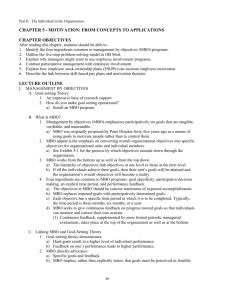155 Influence of Myeloablative Conditioning Regimens on
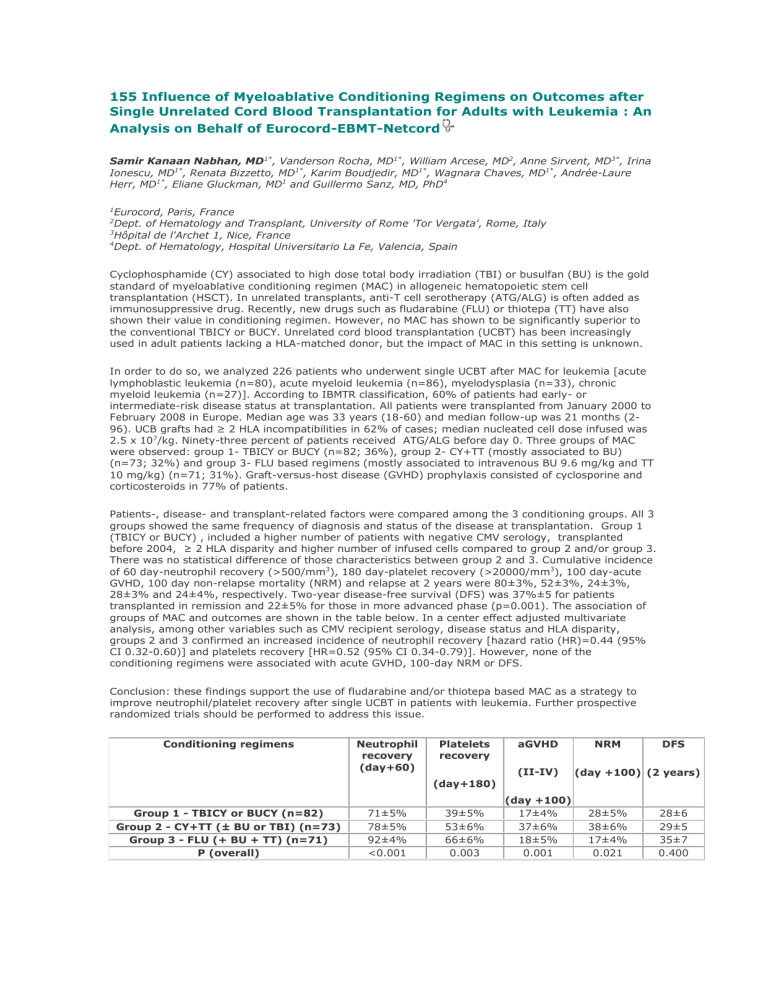
155 Influence of Myeloablative Conditioning Regimens on Outcomes after
Single Unrelated Cord Blood Transplantation for Adults with Leukemia : An
Analysis on Behalf of Eurocord-EBMT-Netcord
Samir Kanaan Nabhan, MD
Ionescu, MD 1*
1* , Vanderson Rocha, MD 1*
, Renata Bizzetto, MD 1*
Herr, MD 1* , Eliane Gluckman, MD 1
, William Arcese, MD 2 , Anne Sirvent, MD 3*
, Karim Boudjedir, MD 1* , Wagnara Chaves, MD
and Guillermo Sanz, MD, PhD 4
1*
, Irina
, Andrée-Laure
1 Eurocord, Paris, France
2 Dept. of Hematology and Transplant, University of Rome 'Tor Vergata', Rome, Italy
3 Hôpital de l'Archet 1, Nice, France
4 Dept. of Hematology, Hospital Universitario La Fe, Valencia, Spain
Cyclophosphamide (CY) associated to high dose total body irradiation (TBI) or busulfan (BU) is the gold standard of myeloablative conditioning regimen (MAC) in allogeneic hematopoietic stem cell transplantation (HSCT). In unrelated transplants, anti-T cell serotherapy (ATG/ALG) is often added as immunosuppressive drug. Recently, new drugs such as fludarabine (FLU) or thiotepa (TT) have also shown their value in conditioning regimen. However, no MAC has shown to be significantly superior to the conventional TBICY or BUCY. Unrelated cord blood transplantation (UCBT) has been increasingly used in adult patients lacking a HLA-matched donor, but the impact of MAC in this setting is unknown.
In order to do so, we analyzed 226 patients who underwent single UCBT after MAC for leukemia [acute lymphoblastic leukemia (n=80), acute myeloid leukemia (n=86), myelodysplasia (n=33), chronic myeloid leukemia (n=27)]. According to IBMTR classification, 60% of patients had early- or intermediate-risk disease status at transplantation. All patients were transplanted from January 2000 to
February 2008 in Europe. Median age was 33 years (18-60) and median follow-up was 21 months (2-
96). UCB grafts had ≥ 2 HLA incompatibilities in 62% of cases; median nucleated cell dose infused was
2.5 x 10 7 /kg. Ninety-three percent of patients received ATG/ALG before day 0. Three groups of MAC were observed: group 1- TBICY or BUCY (n=82; 36%), group 2- CY+TT (mostly associated to BU)
(n=73; 32%) and group 3- FLU based regimens (mostly associated to intravenous BU 9.6 mg/kg and TT
10 mg/kg) (n=71; 31%). Graft-versus-host disease (GVHD) prophylaxis consisted of cyclosporine and corticosteroids in 77% of patients.
Patients-, disease- and transplant-related factors were compared among the 3 conditioning groups. All 3 groups showed the same frequency of diagnosis and status of the disease at transplantation. Group 1
(TBICY or BUCY) , included a higher number of patients with negative CMV serology, transplanted before 2004, ≥ 2 HLA disparity and higher number of infused cells compared to group 2 and/or group 3.
There was no statistical difference of those characteristics between group 2 and 3. Cumulative incidence of 60 day-neutrophil recovery (>500/mm 3 ), 180 day-platelet recovery (>20000/mm 3 ), 100 day-acute
GVHD, 100 day non-relapse mortality (NRM) and relapse at 2 years were 80±3%, 52±3%, 24±3%,
28±3% and 24±4%, respectively. Two-year disease-free survival (DFS) was 37%±5 for patients transplanted in remission and 22±5% for those in more advanced phase (p=0.001). The association of groups of MAC and outcomes are shown in the table below. In a center effect adjusted multivariate analysis, among other variables such as CMV recipient serology, disease status and HLA disparity, groups 2 and 3 confirmed an increased incidence of neutrophil recovery [hazard ratio (HR)=0.44 (95%
CI 0.32-0.60)] and platelets recovery [HR=0.52 (95% CI 0.34-0.79)]. However, none of the conditioning regimens were associated with acute GVHD, 100-day NRM or DFS.
Conclusion: these findings support the use of fludarabine and/or thiotepa based MAC as a strategy to improve neutrophil/platelet recovery after single UCBT in patients with leukemia. Further prospective randomized trials should be performed to address this issue.
Conditioning regimens
Group 1 - TBICY or BUCY (n=82)
Group 2 - CY+TT (± BU or TBI) (n=73)
Group 3 - FLU (+ BU + TT) (n=71)
P (overall)
Neutrophil recovery
(day+60)
71±5%
78±5%
92±4%
<0.001
Platelets
recovery
aGVHD NRM DFS
(day+180)
39±5%
53±6%
66±6%
0.003
(II-IV) (day +100) (2 years)
(day +100)
17±4%
37±6%
18±5%
0.001
28±5%
38±6%
17±4%
0.021
28±6
29±5
35±7
0.400
